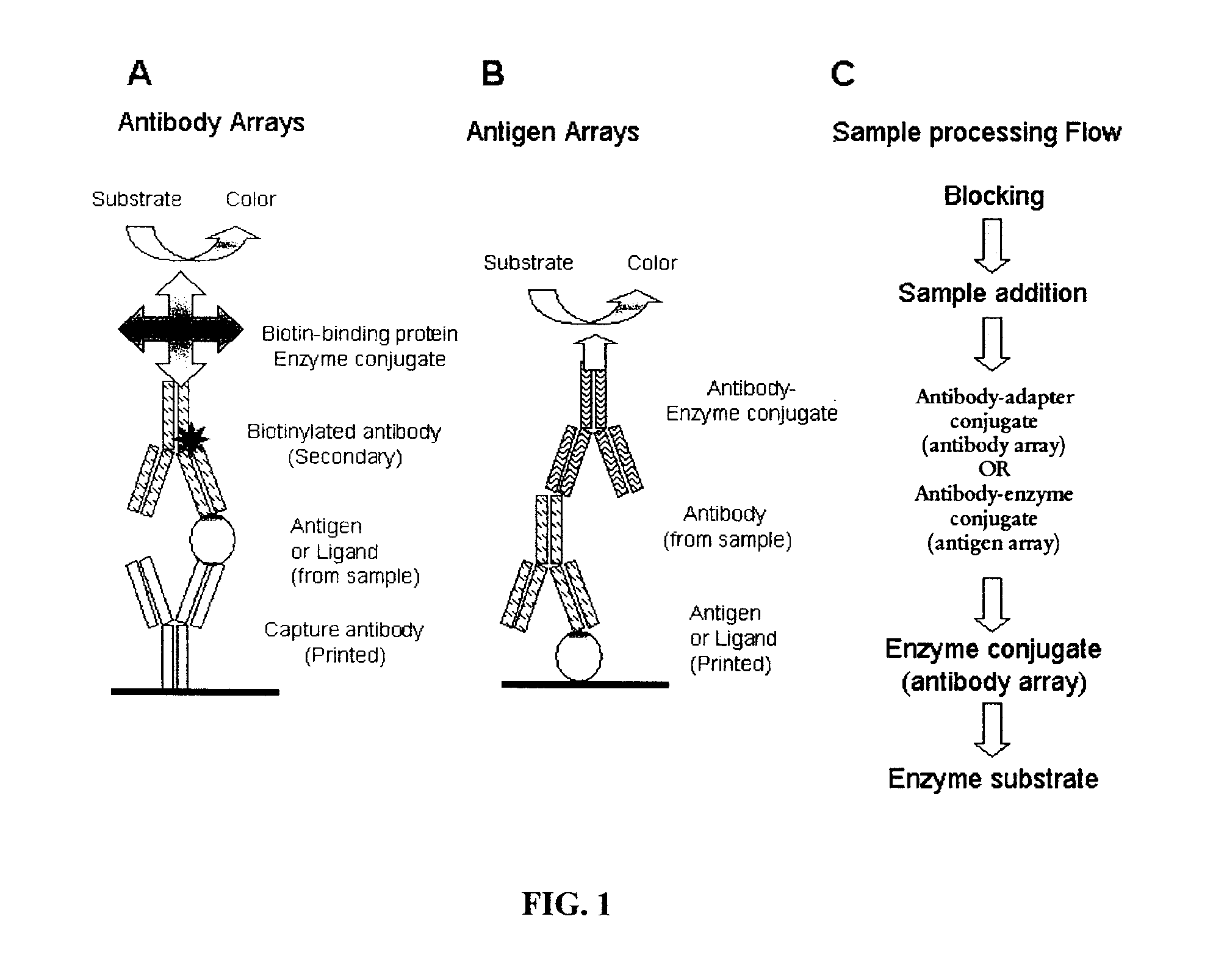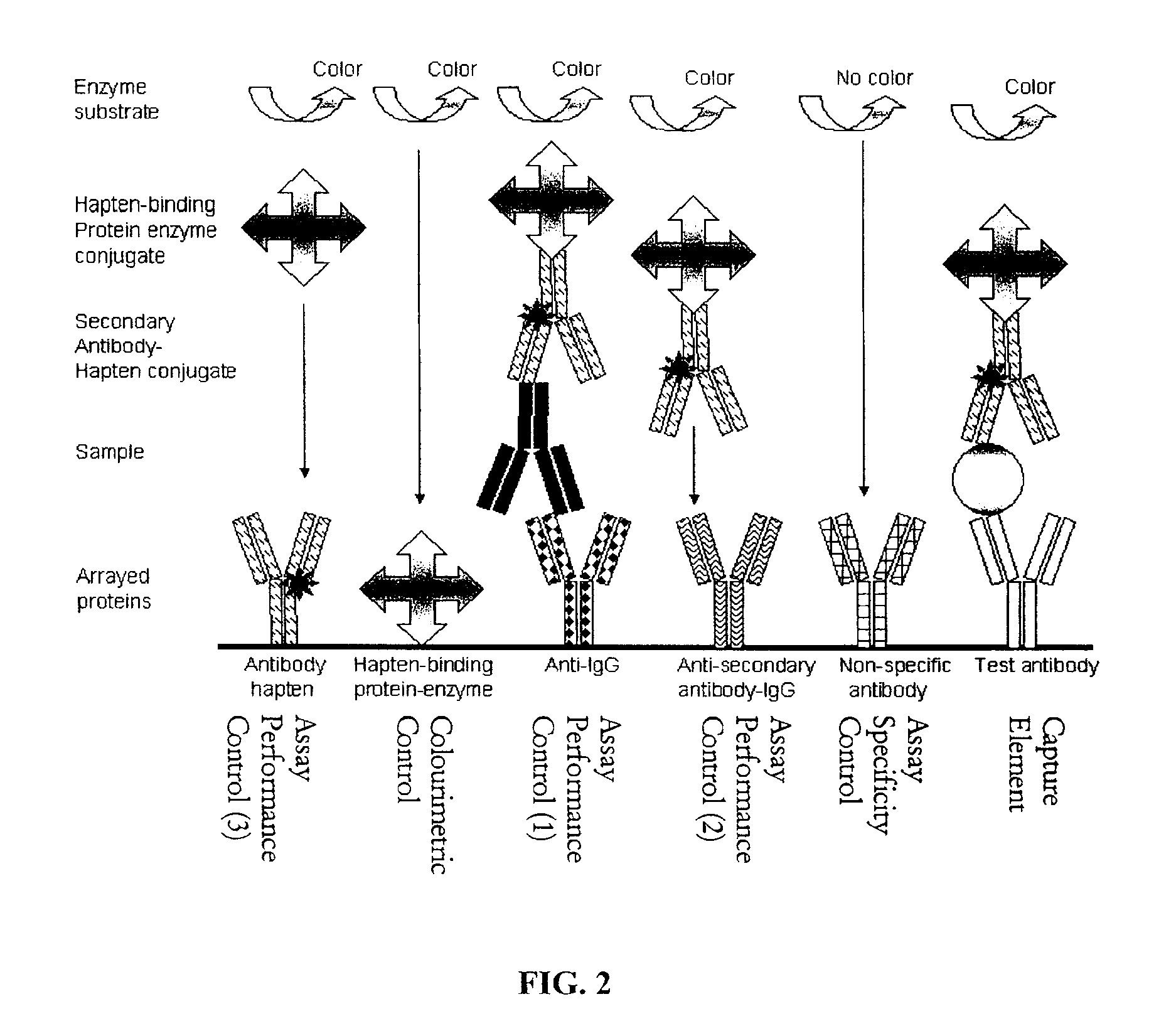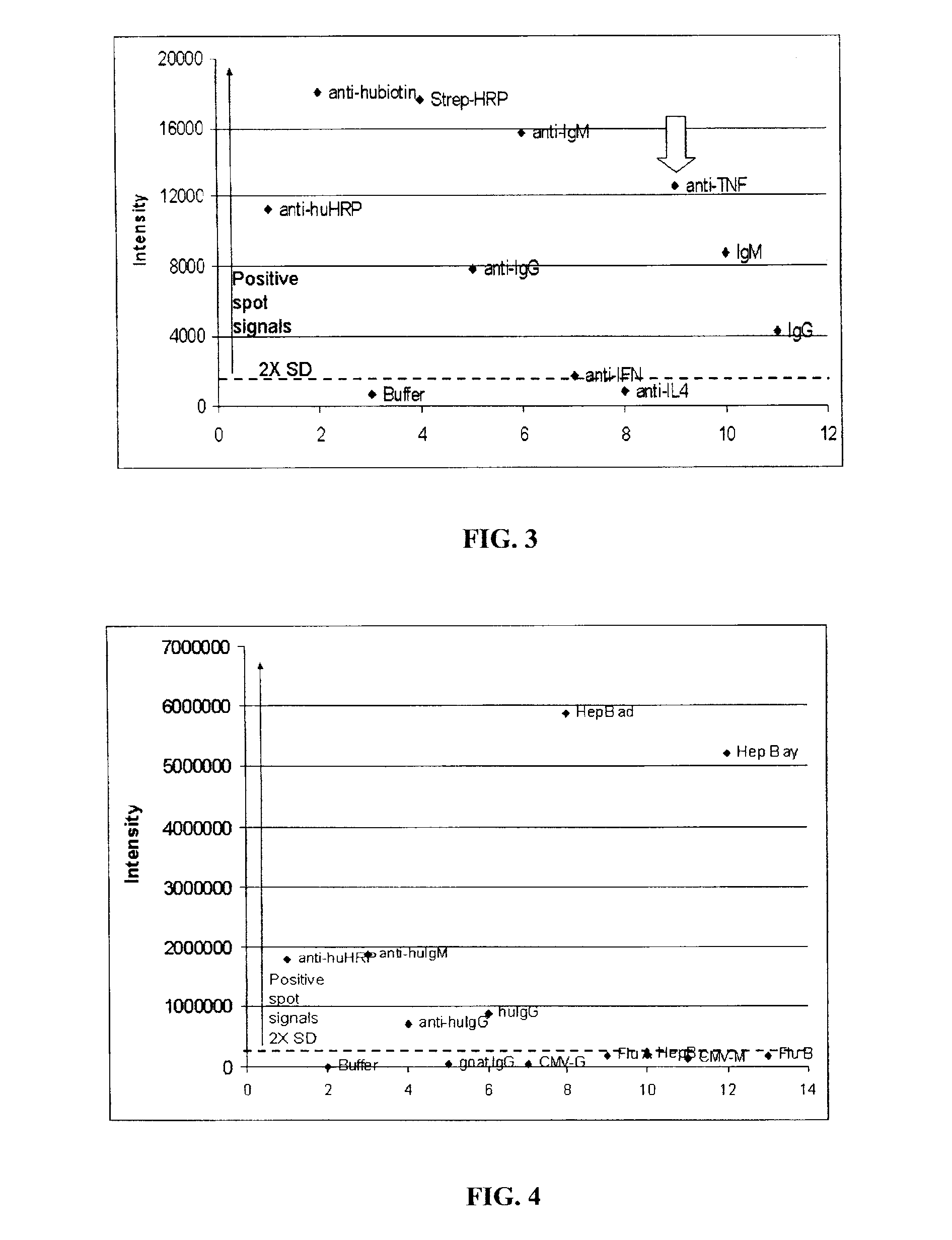Assay Membrane and Method of Use Thereof
a technology of assay membrane and assay method, which is applied in the field of assay membrane, can solve the problems of high cost and cumbersomeness of available screening technologies for large number of samples from subjects, and the technology has yet to be adopted as a routine method for diagnostic testing
- Summary
- Abstract
- Description
- Claims
- Application Information
AI Technical Summary
Benefits of technology
Problems solved by technology
Method used
Image
Examples
example 1
General Procedures for Array Manufacture
[0187]Membranes or films attached to a bottomless 96-well polystyrene plate (such as nylon, Nalge Nunc International, USA,) were used for printing microarrays. Various methods may be used to attach the membranes to the 96-well bottomless plates. In this example, a rubber sheet with dimensions of 128 mm length and 86 mm and 1 mm thickness was used. 96 round holes were stamped on the sheet with a diameter of 6.35 mm and a center to center distance of 9 mm. The sheet was then coated with adhesive on both sides and glued to one side of the 96-well bottomless plate such that the second adhesive layer was still available for binding to a membrane. A nylon membrane was then cut to the dimensions of 128 mm length and 86 mm width and attached to the other side of the rubber sheet to create a gasket that creates leak proof wells.
[0188]Another method for attaching the membranes to the 96-well bottomless plates involves use of an adhesive that is applied ...
example 2
General Procedure for Array Processing and Analysis
[0195]The arrays were incubated at 37° C. for 60 min after adding 100 μl of Blocker [1% casein (Vector Labs, USA) in phosphate buffered saline containing 0.1% Tween 20 (PBS-T)] to each well. The Blocker was then aspirated off.
[0196]Samples containing analytes were added by diluting in Blocker at a volume of 50 μl in each well and the membrane incubated at 37° C. for 60 min. The membrane was washed 3× with PBS-T to remove excess non-bound analytes.
[0197]For antibody arrays (for antigen detection), adapter-conjugated detection antibodies were added to the wells at concentrations either recommended by the manufacturer or empirically determined by experimentation. Examples of adapter-conjugated antibodies include hapten-conjugated antibodies such as biotin-conjugated antibodies. The membrane was incubated at 37° C. for 60 min and washed 3× with PBS-T. The membrane was then incubated with an anti-adapter antibody (such as an anti-biotin ...
example 3
Antibody Arrays
[0202]Arrays for detection of antigens such as protein markers of autoimmune diseases, cardiovascular diseases, cancer and infectious agents, or ligands such as growth factors, hormones, cytokines and chemokines are created by printing panels of antibodies as capture elements for specific capture of the antigen. A series of control antibodies and control proteins are also printed. These controls serve a variety of functions including controls for monitoring assay performance including performance of individual reagents, controls for monitoring the specificity of the capture antibodies and fiduciary markers for gridding the arrays after sample processing for determination of signal intensity at each spot in the array. Table 4 summarises the reagents that may be used to print and process antibody arrays. The assay performance control numbering relates to the numbering in FIG. 2.
TABLE 4Antibody array reagentsReagentFunctionExampleCommentsProtein or antibodyFiduciary mark...
PUM
| Property | Measurement | Unit |
|---|---|---|
| diameter | aaaaa | aaaaa |
| diameter | aaaaa | aaaaa |
| temperature | aaaaa | aaaaa |
Abstract
Description
Claims
Application Information
 Login to View More
Login to View More - R&D
- Intellectual Property
- Life Sciences
- Materials
- Tech Scout
- Unparalleled Data Quality
- Higher Quality Content
- 60% Fewer Hallucinations
Browse by: Latest US Patents, China's latest patents, Technical Efficacy Thesaurus, Application Domain, Technology Topic, Popular Technical Reports.
© 2025 PatSnap. All rights reserved.Legal|Privacy policy|Modern Slavery Act Transparency Statement|Sitemap|About US| Contact US: help@patsnap.com



